Our research focuses on developing and using computational methods for understanding ecological and evolutionary patterns and processes with a focus on conservation biology.
Urban Wildlife Corridors
In an effort to understand how wildlife move through habitat patches in urban areas, we have collaborated with the Arroyos & Foothills Conservancy to implement a motion-triggered camera trap transect that stretches from the San Gabriel Mountains through the Verdugo Mountains, San Rafael Hills, and down the Arroyo Seco. This transect is part of a larger international partnership, the Urban Wildlife Information Network (UWIN), to evaluate how wildlife respond to urbanization across multiple cities.
Check out our paper, Urban Wildlife Corridors: Building Bridges for Wildlife and People

Camera trap set up to capture wildlife movement throughout habitat patches in Los Angeles.
Urban Wildlife Automated Photo Identification & Databases
Camera traps generate hundreds to thousands of images. Managing these databases and identifying wildlife in photos requires a lot of time and effort. We are working to develop pipelines to speed up the processing of these images and manage large photo datasets.
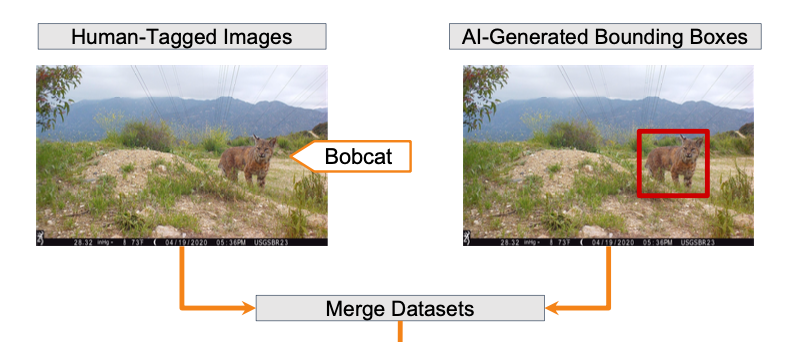
Automated Frog ID
Up until about 25 years ago, there were no established frog populations on the Galapagos Islands. Today, there are at least two islands with established populations of the treefrog, Scinax quinquefasciatus. The species has mostly been documented in and around human-modified areas of the islands; however, it remains unknown the extent to which this species can or has already expanded into the National Park regions of the islands or onto other uninhabited islands. To aid in tracking the spread of this species, we are working with the Charles Darwin Research Station to implement automated audio detectors on the islands.

Urban Salamander Distributions – The Role of Community Science
Species distribution models are more frequently incorporating community science observations. We compare models created with traditional museum specimens and community science observations to evaluate how these observations change predicted distributions.
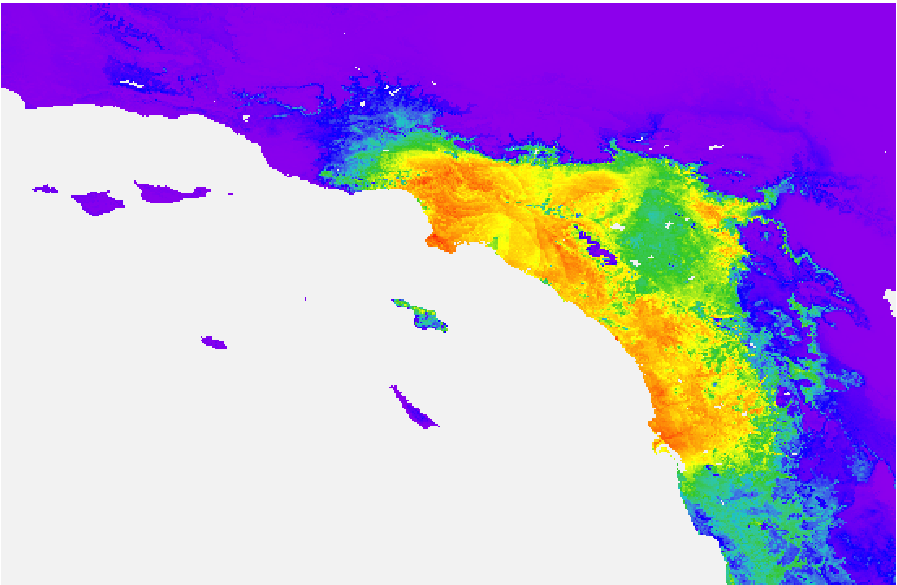
Species Distribution Model of Batrachoseps major in Southern California. Warm colors indicate high predicted climatic suitability.
Predicting Changes in Suitable Habitat for Amphibians
Amphibian populations are threatened globally, and one of the hypotheses for these declines is climate change. Species distribution models are frequently used to predict changes in suitable habitat as a result of changing climates; however, these projections can be heavily influenced by choice of modeling approach. To evaluate global predictions for amphibians, we conducted a literature review of studies that utilize correlative species distribution models to project changes in climate suitability under various climate change scenarios. We paid particular attention to the use of model selection in choosing among candidate species distribution models (SDMs) so as to control for overparameterization of SDMs. In addition, we conducted a case study with three species of Slender Salamanders (Batrachoseps) to further investigate the impact of differences in modeling decisions on projected amphibian climate suitability.
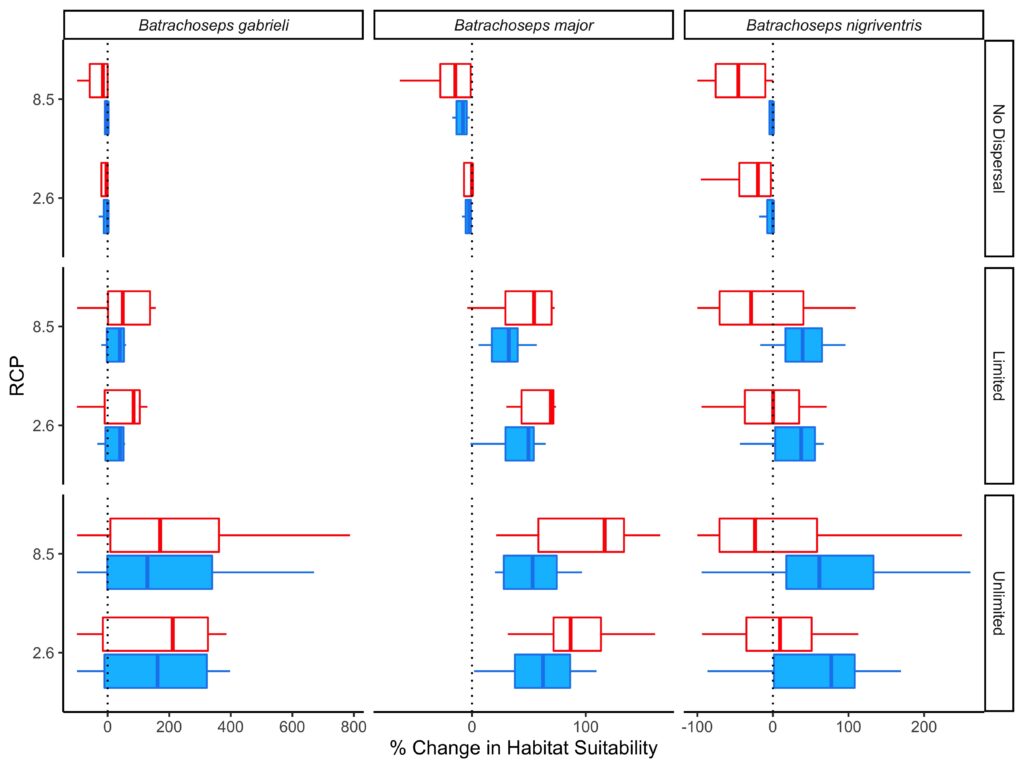
Variation in predicted change in suitable habitat due to climate change under various model assumptions.
Optimizing Habitat Restoration with Species Distribution Models
Identifying ideal locations for habitat restoration projects is crucial for their success. We are utilizing multi-species Distribution Models to identify locations along the southern coast of California that have high levels of predicted presence of over 40 commercially and recreationally important shallow rocky reef fish and invertebrate species in an effort to identify preferred locations for manmade reef projects.
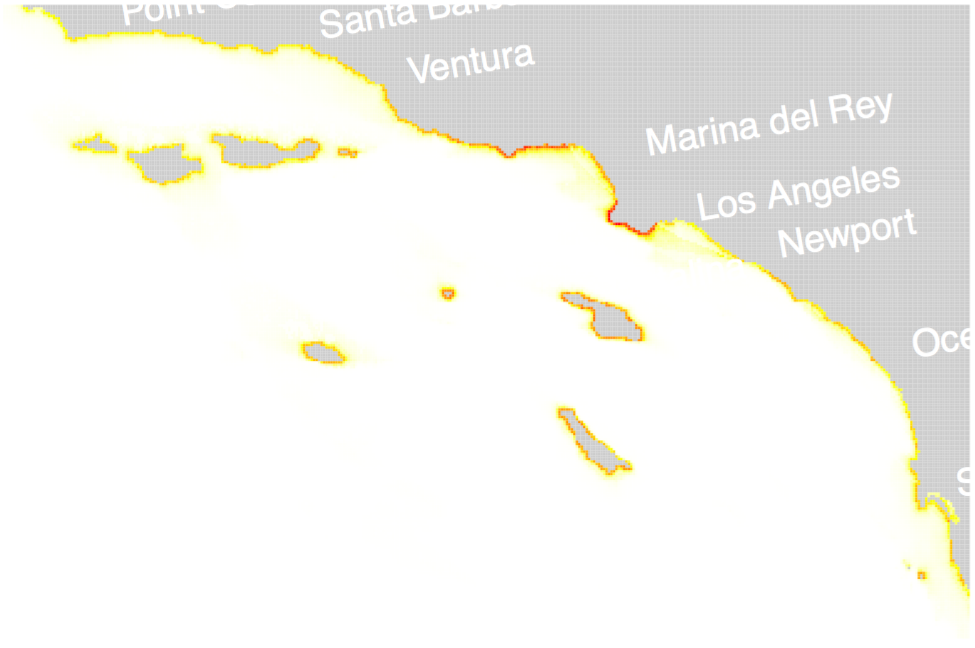
Multi-species Distribution Model indicating areas of high predicted probability of presence across multiple shallow rocky reef fish and invertebrate species.
Quantifying Spatiotemporal Indicators of Human Impacts on Reefs
Incorporating human impacts on ecosystems is essential for ecological studies in heavily impacted regions. We used an interdisciplinary approach to integrate historic commercial and recreational fishing records with biological and geophysical data to quantify a spatiotemporal harvest intensity index on shallow rocky reefs in Southern California.
[WPGP gif_id=”42″ width=”500″]
Yearly changes in Harvest Intensity Index for Commercial and Recreational CPFV fishing across the Southern California Bight. Metric Tons per km squared of reef area for 66 shallow rocky reef fish and invertebrate species combined.
Predicting the Spread of Emerging, Invasive Pathogens – Salamander Chytrid
Species Distribution Models are frequently used for predicting the spread of invasive species; however, few studies evaluate the predictive power of alternative models of spread. Using a model selection framework to compare candidate models for the spread of Batrachochytrium salamandrivorans, the emerging infectious salamander chytrid, we were able to successfully isolate a single best fit model.
Slender Salamander from Millard Canyon in the San Gabriel Mountains, CA.
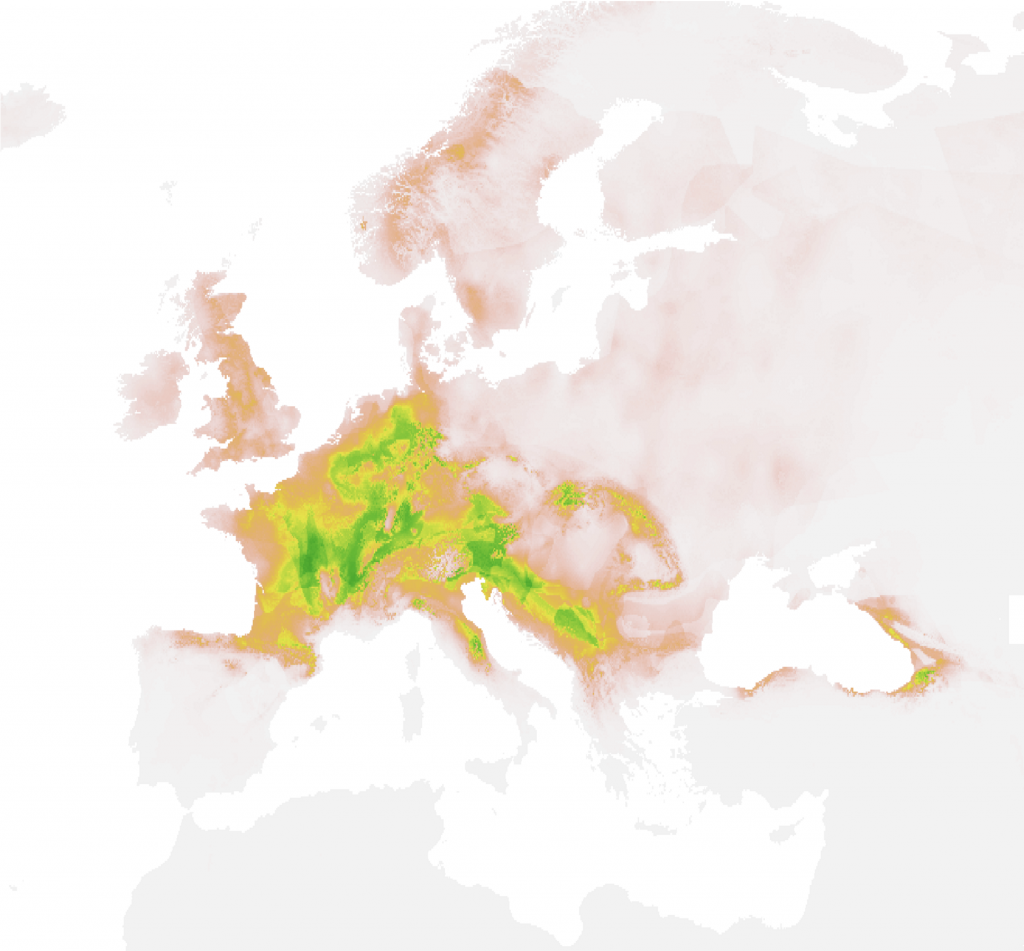
Predicted probability of presence for Batrachochytrium salamandrivorans in Europe based on environmental associations in the native range of the fungal pathogen.
Best Practices for Improving Inclusivity in the STEM Classroom
Creating inclusive classrooms provides an opportunity for students of all backgrounds to succeed. In reviewing the literature to evaluate evidence for the most frequently utilized and promoted methods for improving performance of underrepresented minorities, we found that while some studies show significant impacts of these methods, there is a general lack of experimental studies on the topic. Future research needs to consider how these methods contribute to the success of all students in our STEM classrooms.
Achievement gap ratio between underrepresented minority and majority students by inclusivity practice. The data come from studies that examined one of the four broad inclusivity practices for both URM and majority populations

